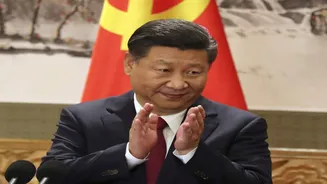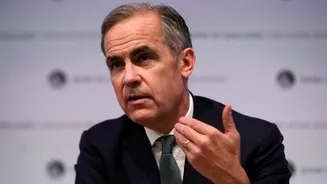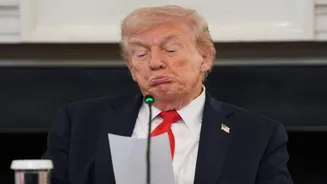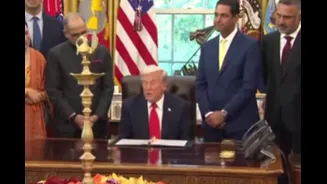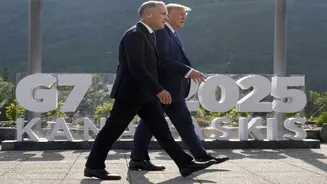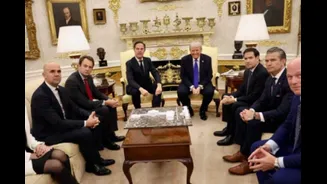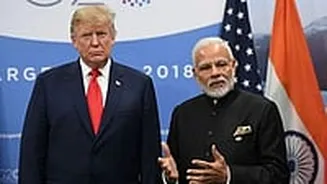What is the story about?
The Chinese Communist Party (CCP) has increasingly deployed sophisticated influence operations and coercive diplomacy to expand its global reach, undermine democratic values, and reshape the international order. From funding networks that infiltrate foreign institutions to staging mock military actions, China’s tactics are multifaceted, often leveraging economic, technological, and political tools to exert pressure.
In the months of September and October this year alone, the range and scope of the CCP’s influence operations and coercive diplomacy witnessed are immense. As far as India is concerned, while Beijing claims a warming of ties with New Delhi, it tacitly pushes pro-CCP narratives in India through academics and media, even as it seeks better market access to the world’s fastest-growing major economy.
China’s influence operations span continents, targeting critical infrastructure, public opinion, and political systems. In the United States, for instance, federal agents uncovered a CCP-linked network capable of crippling telecommunications systems. This plot involved over 300 SIM servers and 100,000 SIM cards in New York, with an additional 200,000 SIM cards discovered in New Jersey, designed to disrupt cell towers, block 911 calls, and unleash chaos in communications. Such operations underscore the CCP’s intent to exploit vulnerabilities in critical infrastructure, posing a direct threat to national security.
In academia, the CCP’s reach is equally alarming. The case of MIT Professor Gang Chen, arrested in 2021 for concealing ties to the Chinese government, revealed how foreign funding can infiltrate American institutions. A GoFundMe campaign for Chen’s legal defence, heavily promoted by the United Chinese Americans (UCA), raised $401,254, with significant contributions from Chinese nationals, including professors at Peking University and others based in China. This illustrates the CCP’s ability to mobilise diaspora communities to influence judicial processes abroad.
Economic coercion is another hallmark of China’s strategy. In Canada, the sale of mine assets to Chinese state-owned Zijin has transformed it into the world’s third-largest mining company, valued at $100 billion. This acquisition, flagged as a national security risk years earlier, highlights how China secures strategic resources to bolster its global dominance. Similarly, in the UK, China reportedly cut off water supplies to British diplomats in Beijing to pressure the UK government into approving a controversial Chinese mega-embassy in London. These actions demonstrate the CCP’s willingness to use economic leverage to achieve political ends.
China’s coercive diplomacy extends to military posturing and cyberattacks. In September 2025, Chinese jets conducted mock missile attacks on a British warship transiting the Taiwan Strait, signalling Beijing’s readiness to intimidate Western powers in contested regions. In Norway, two Chinese nationals were arrested for flying a drone near Bardufoss Airport, a key NATO military hub, raising concerns about espionage. Similarly, in Japan, Chinese nationals were caught filming near the Ministry of Defence, using facial tracking tools to target Self-Defence Force officers—an act that would be unthinkable near the Pentagon.
Cyber operations further amplify China’s influence. Recent reports indicate Chinese hackers targeted a nuclear weapons production facility in Kansas, part of a broader campaign against U.S. nuclear infrastructure. These cyberattacks, coupled with efforts to insert insecure devices like Huawei and ZTE equipment into American markets, reveal a concerted effort to undermine national security. The U.S. Federal Communications Commission’s Operation Clean Carts, launched in October 2025, aims to remove such devices, highlighting the scale of the threat.
The CCP also manipulates public opinion through disinformation. In the Philippines, the Chinese Embassy hired a marketing firm to run fake social media accounts that praised China, criticized Western Covid vaccines, and undermined the Philippines’ security alliance with the U.S. Such campaigns erode trust in democratic institutions and sow division—a tactic China employs globally.
India, a rising global power, has not been immune to China’s influence operations. In October 2025, China unveiled a so-called “civilian drone testing base” in Tibet, less than 100 km from the Indian border in Uttar Pradesh. This facility, coupled with the introduction of a new drone designed for “high-altitude operations”, raises concerns about China’s military intentions along the Line of Actual Control (LAC). Given the history of border tensions, including the 2020 Galwan Valley clash, this development signals China’s ongoing efforts to assert dominance in the region.
Economically, China has leveraged its technological prowess to penetrate India’s markets. Huawei, a company closely tied to the CCP, received $10 billion in loans to finance customer purchases in India, with its India head reportedly offering double salaries to lure Indian engineers. This aggressive expansion not only strengthens China’s economic foothold but also raises concerns about data security and technological dependency, given Huawei’s history of ties to the Chinese state.
These actions in India reflect a broader pattern of coercive diplomacy. By positioning military assets near the border and infiltrating India’s tech sector, China seeks to exert pressure while maintaining plausible deniability through “civilian” projects. India’s experience underscores the need for vigilance in countering hybrid threats that blend economic, technological, and military strategies.
India’s encounters with Chinese influence operations offer critical lessons for the global community. First, nations must prioritise strategic autonomy in critical sectors like technology and infrastructure. India’s push to develop indigenous 5G technology and reduce reliance on Chinese firms like Huawei is a step in the right direction. Other countries should follow suit, investing in domestic innovation to mitigate vulnerabilities to foreign influence.
Second, robust intelligence and cybersecurity measures are essential. The discovery of Chinese drones near military bases in Norway and Japan highlights the need for enhanced surveillance and counter-espionage capabilities. India’s proactive monitoring of border activities, including the drone testing base, demonstrates the importance of real-time intelligence to detect and deter threats.
Third, international cooperation is vital. The CCP’s global reach requires a coordinated response. India’s alignment with the Quad—comprising the U.S., Japan, and Australia—strengthens its ability to counter China’s influence. Other nations should seek similar alliances to share intelligence, align policies, and counter economic coercion collectively.
Finally, public awareness and transparency are powerful tools. The CCP thrives in opacity, using anonymous funding and fake social media accounts to manipulate narratives. India’s open discourse on Chinese activities, including media coverage of border developments, helps build public resilience. Governments worldwide should educate citizens about foreign influence operations and promote transparency in funding and political activities.
China’s influence operations and coercive diplomacy, as evidenced by actions in the U.S., UK, Canada, Japan, the Philippines, and India, represent a systemic challenge to the international order. China’s war against the rules-based international order is currently underway through proxies, while military force preparations continue in the PRC. The CCP leverages media, banks, companies, and diaspora networks to advance its agenda. Japan’s 2025 Defence Report, labelling Beijing as the greatest threat to global order since World War II, underscores the urgency of this issue.
India’s experience highlights the need for a multifaceted response: securing critical infrastructure, fostering technological independence, strengthening intelligence, and building international partnerships. As exemplified by Taiwan’s Doublethink Lab’s China Index, India ranks low in terms of the successes the PRC’s influence operations have had. Tracking these operations methodologically and mutual learning among democracies would yield better results in preserving the rules-based international order. The stakes are high, and the time for complacency has long passed.
Do you find this article useful?
